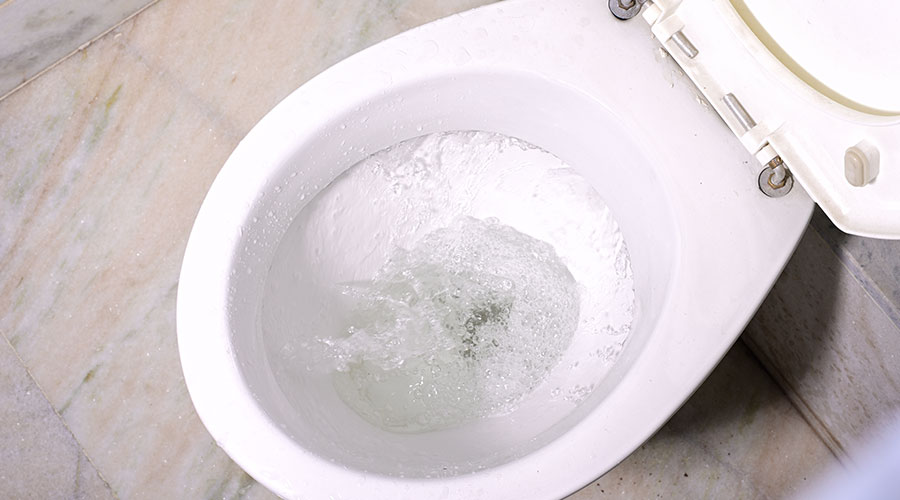Bacteria, viruses and spores are transported in airborne water droplets. Knowing where these droplets go is the crux of a difficult problem and is the reason we need to study the way diseases spread.
Microbial spread also might come from water droplets of various sizes and other particles created by toilet flushing. Toilet plume aerosol is a mist that spreads through the air and can land on surfaces, be inhaled and travel through ventilation systems.
Research shows that toilet plume aerosol generated by flushing chemotherapeutically tainted human waste contaminates bathroom environments. It also results in chemotherapy being detected in caregivers’ urine samples.
The potential risks associated with toilet plume produced by flush toilets has been described in scientific literature since the 1970s and surfaced again recently.
Clostridioides difficile (C. diff) is a gram-positive, spore-forming anaerobe associated with infections ranging from diarrhea to severe disease with complications such as pseudomembranous colitis, toxic megacolon and death. C. diff infection (CDI) is recognized as the leading cause of gastroenteritis-associated deaths and the most common cause of healthcare-associated infections (HAI) in the United States.
Healthcare-associated CDI contributes to increased length of hospital stays, 40 percent higher expenditures for each diagnosed case and higher readmission rates and mortality. Excess expenditures related to CDI in acute care hospitals are estimated to be $4.8 billion.
CDI is also increasingly diagnosed in patients in nursing homes and long-term acute care facilities, adding to a change in CDI epidemiology, including a rise in economic burden, morbidity and mortality.
When it comes to contaminated hospital surfaces, CDI is winning the battle against disinfectants. C. diff is one of the most difficult HAI agents to eradicate because of the limited number of antibiotics or disinfectants effective against this bacterium.
When the environment becomes hostile, bacteria like C. diff form spores that resist heat and chemical disinfectants, allowing them to survive when most common bacteria would die. Later, when the environment becomes more favorable for bacteria, the C. diff returns to its original state and where it begins to infect and multiply again.
We need a quantitative risk assessment and related research to investigate these transmission risks in healthcare facilities. There is a lack of national and international toilet plume studies and the best ways to mitigate the risks to staff and patients. These studies should lead to the creation of a national standard of engineering controls that prevent unnecessary exposure of staff and patients.
J. Darrel Hicks, BA, MESRE, CHESP, Certificate of Mastery in Infection Prevention, is the past president of the Healthcare Surfaces Institute. Hicks is nationally recognized as a subject matter expert in infection prevention and control as it relates to cleaning. He is the owner and principal of Safe, Clean and Disinfected. His enterprise specializes in B2B consulting, webinar presentations, seminars and facility consulting services related to cleaning and disinfection. He can be reached at darrel@darrelhicks.com, or learn more at www.darrelhicks.com.

 Grounding Healthcare Spaces in Hospitality Principles
Grounding Healthcare Spaces in Hospitality Principles UC Davis Health Selects Rudolph and Sletten for Central Utility Plant Expansion
UC Davis Health Selects Rudolph and Sletten for Central Utility Plant Expansion Cape Cod Healthcare Opens Upper 2 Floors of Edwin Barbey Patient Care Pavilion
Cape Cod Healthcare Opens Upper 2 Floors of Edwin Barbey Patient Care Pavilion Building Sustainable Healthcare for an Aging Population
Building Sustainable Healthcare for an Aging Population Froedtert ThedaCare Announces Opening of ThedaCare Medical Center-Oshkosh
Froedtert ThedaCare Announces Opening of ThedaCare Medical Center-Oshkosh